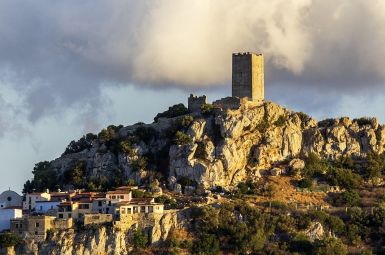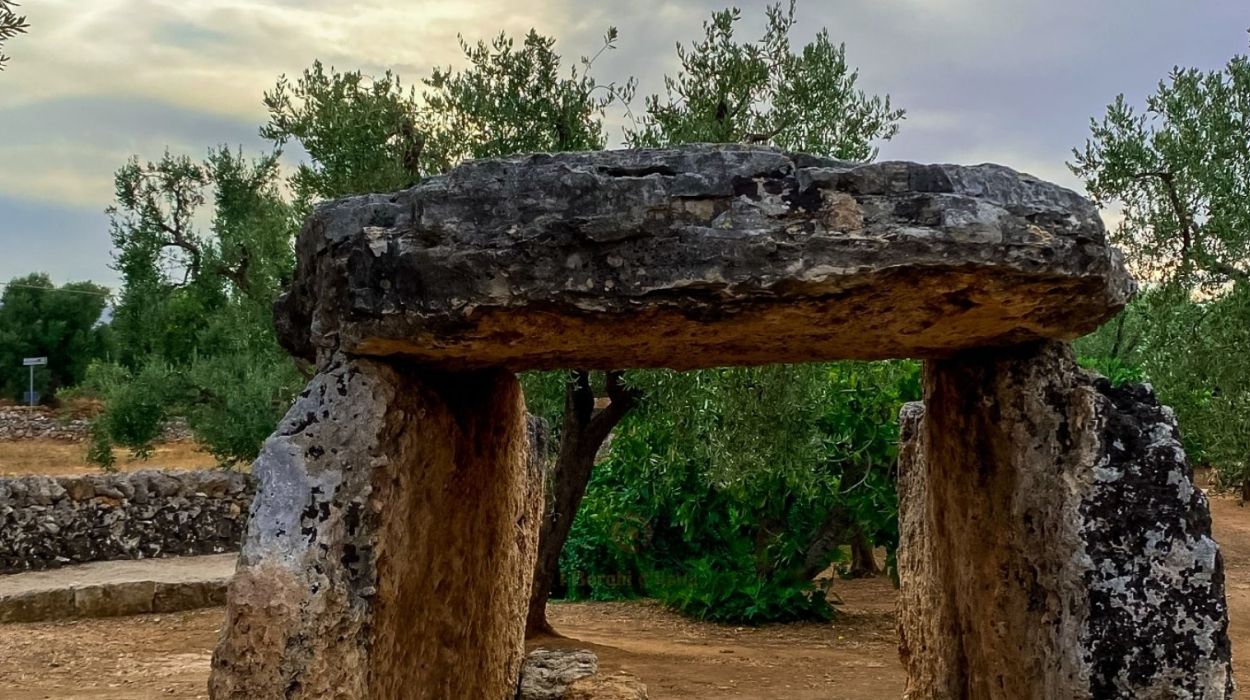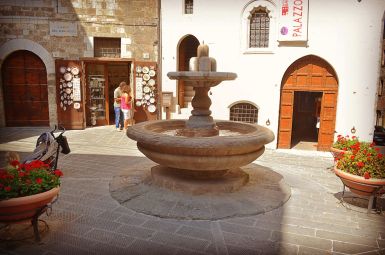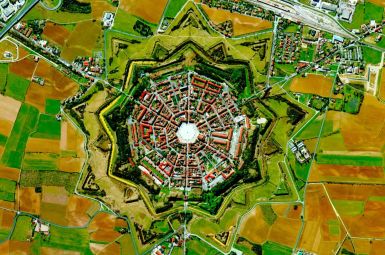
Montalbano Jonico
Il Borgo di Montalbano Jonico
Montalbano Jonico: Dove la Storia Affiora dalla Terra
Montalbano Jonico (MT) è molto più di un borgo: è una sentinella storica incastonata su un crinale che domina la Valle dell’Agri, un luogo dove la storia umana si fonde con la geologia millenaria. Qui, l’eredità magnogreca e romana convive con la natura scultorea di uno dei paesaggi più affascinanti della Basilicata. Preparati a esplorare una città che è un vero e proprio museo a cielo aperto, a metà strada tra le vette dell’Appennino e le spiagge dello Ionio.I Calanchi: Il Museo Paleontologico a Cielo Aperto
Il tratto distintivo e di maggiore impatto visivo di Montalbano Jonico è il suo paesaggio circostante, scolpito dai Calanchi.- L’Architettura Naturale: Queste formazioni argillose, modellate dall’erosione e dal vento in creste, canaloni e canyon, creano uno scenario quasi lunare, di una bellezza struggente. Sono protetti dalla Riserva Regionale dei Calanchi di Montalbano Jonico.
- Un Tesoro Scientifico: I Calanchi di Montalbano sono riconosciuti a livello internazionale per la loro eccezionale valenza geologica e paleontologica. Sono un vero e proprio stratotipo globale, una sezione ideale per studiare il limite tra il Pleistocene Inferiore e Medio, ricchissima di fossili che raccontano la storia del paleomare che qui esisteva milioni di anni fa.
Il Cuore Storico: Dalle Mura al Pensiero
Il borgo, sorto su un terrazzo marino, racconta secoli di dominio e cultura, dal Medioevo all’epoca risorgimentale.- La Porta e il Centro Storico: Il cuore antico della città, il Rione Terravecchia, è accessibile attraverso la Porta del Castello (o dell’Orologio). Passeggiare nei vicoli significa ripercorrere le tracce lasciate da Normanni e Aragonesi.
- La Fede e l’Arte: La Chiesa Madre di Santa Maria dell’Episcopio è un simbolo del borgo, che custodisce opere di pregio, tra cui tele seicentesche (attribuite a Mattia Preti) e il prezioso busto reliquiario di San Maurizio.
- L’Eredità Intellettuale: Montalbano fu un centro vivace anche nel ‘700 e ‘800. Qui nacque e visse Francesco Lo Monaco, letterato, filosofo e patriota attivo nella Repubblica Partenopea, testimoniando la vocazione culturale e l’impegno civile della città.
Il Profumo della Terra: Eccellenze Agricole
La posizione tra i fiumi Agri e Cavone e la vicinanza alla costa ionica hanno reso il territorio fertile, oggi noto per le sue produzioni agroalimentari di altissima qualità.- Sapori Decisi: Dalle produzioni di olio extra vergine d’oliva IGP ai vigneti che producono vini eccellenti, fino alle coltivazioni di frutta (pesche, susine e kiwi).
- I Segreti della Tradizione: La cucina locale è stata premiata con il marchio DE.CO. (Denominazione Comunale) per ricette che raccontano l’identità del borgo, come il Pastizzo (un rustico tipico pasquale) e i panzerottini con i ceci.
Montalbano Jonico ti aspetta per una doppia scoperta: una vertigine geologica e un tuffo in una storia ricca e fiera. Sei pronto a camminare in un paesaggio che è un fossile vivente?

Il Borgo d’Italia
tutto da scoprire ed esplorare
Monumenti
Montalbano Jonico Monumentale: Architetture tra Storia e Geologia
Montalbano Jonico (MT) si erge come un baluardo storico e culturale su un colle che domina un panorama di ineguagliabile bellezza. I suoi monumenti sono il risultato di secoli di stratificazione, in cui le vestigia medievali si fondono con la potenza scultorea del paesaggio argilloso.
Scopri le architetture che testimoniano il glorioso passato di questa città, candidata a rappresentare un’epoca cruciale della storia della Terra.
1. La Riserva Regionale dei Calanchi: Il Monumento della Natura
Il monumento più imponente e unico di Montalbano non è opera dell’uomo, ma del tempo. La Riserva Regionale dei Calanchi è un’area geologica di eccezionale importanza e bellezza struggente.
- L’Eredità della Terra: Queste formazioni argillose, modellate dall’erosione in creste affilate e canyon sinuosi, sono un vero e proprio museo paleontologico a cielo aperto. Sono un punto di riferimento scientifico globale (stratotipo) per lo studio del Pleistocene, ricco di fossili che raccontano il ritiro del mare.
- L’Esperienza: Ammirare i Calanchi, in particolare dal Belvedere, non è solo osservare un paesaggio, ma compiere un viaggio indietro nel tempo di milioni di anni.
2. Il Centro Storico: La Terravecchia e le Mura
Il nucleo antico di Montalbano, noto come Rione Terravecchia, racchiude l’eredità medievale e rinascimentale del borgo.
- Porta e Difesa: L’ingresso principale al nucleo storico è segnato dalla Porta del Castello (o dell’Orologio). Nelle vicinanze, si possono ancora ammirare i resti delle Mura Normanne e aragonesi, con le loro torri quadrate e le feritoie, testimoni dei secoli in cui la città doveva difendersi dalle incursioni, come l’attacco ottomano del 1555.
3. La Chiesa Madre di Santa Maria dell’Episcopio: Fede e Tesori d’Arte
È il principale edificio religioso e un punto di riferimento visivo nel panorama cittadino.
- Il Cuore Spirituale: La Chiesa, riedificata e rimaneggiata nel corso dei secoli, conserva al suo interno significative opere d’arte che ne attestano l’importanza storica. Tra queste, spiccano la tela seicentesca attribuita a Mattia Preti e il busto reliquiario di San Maurizio, patrono della città, custodendo l’antica devozione locale.
4. Il Palazzo Rondinelli e l’Eredità Culturale
I palazzi nobiliari, concentrati attorno al centro storico, testimoniano il fermento culturale ed economico che caratterizzò Montalbano, soprattutto tra il Settecento e l’Ottocento.
- Sede di Cultura: Il Palazzo Rondinelli e altri edifici storici rappresentano la cornice in cui fiorì una vivace vita intellettuale e politica, legata anche a figure come il patriota Francesco Lo Monaco. Oggi, questi palazzi sono spesso sedi di istituzioni culturali, come la biblioteca comunale, mantenendo vivo il ruolo della città come centro di pensiero.
Montalbano Jonico è un luogo dove la bellezza scultorea dei Calanchi incontra la forza della storia. Sei pronto a camminare tra roccia e vicoli, scoprendo l’anima fiera di questo borgo lucano?
Curiosità
Montalbano Jonico Segreta: Tra Fossili, Leggi e Oro Azzurro
Montalbano Jonico (MT) è un luogo dove il tempo si misura in milioni di anni, e non in secoli. Arroccata a dominare il Metapontino, questa città affascinante nasconde curiosità che spaziano dalla scienza geologica al patriottismo risorgimentale.
Ecco i dettagli e i segreti che rendono Montalbano Jonico un punto di riferimento unico in Basilicata:
Il Museo a Cielo Aperto che Svela il Tempo della Terra
La curiosità più grande di Montalbano è legata al suo straordinario paesaggio naturale, i Calanchi.
- Il Chiodo d’Oro Mancato: La Riserva dei Calanchi di Montalbano Jonico è stata candidata a ottenere il “Golden Spike” (il Chiodo d’Oro), ovvero il riconoscimento di Stratotipo Globale per la sezione limite tra il Pleistocene Inferiore e il Pleistocene Medio. In termini semplici, la sua terra argillosa è considerata la documentazione geologica più chiara e completa al mondo per studiare questo particolare periodo della storia della Terra.
- Fossili di Mare in Montagna: Passeggiando tra le creste calanchive, si scopre che le rocce sono incredibilmente ricche di fossili marini. Questa è la prova diretta che, milioni di anni fa, quella collina era il fondale di un paleomare, rendendo l’escursione un’autentica caccia al tesoro scientifica.
Il Borgo dei Patrioti e della Grande Archeologia
L’identità di Montalbano non è solo geologica, ma profondamente culturale e politica.
- La Culla del Pensiero Repubblicano: Montalbano diede i natali a Francesco Lo Monaco, patriota e intellettuale che fu un fervente sostenitore della Repubblica Partenopea del 1799. La città fu un centro attivo dei moti antiborbonici, dimostrando un precoce spirito di libertà e un’elevata coscienza civica nel Meridione.
- Le Tavole di Eraclea Nascoste Qui: È un fatto meno noto che le famose Tavole di Eraclea—due lamine di bronzo con iscrizioni in greco e latino di enorme importanza storica e giuridica—furono ritrovate nel 1732 proprio nel territorio di Montalbano Jonico, in contrada Ucio, presso il fiume Cavone. Queste tavole sono oggi tra i reperti archeologici più preziosi della Lucania.
Tesori Gastronomici Riconosciuti
La cucina di Montalbano Jonico ha un’identità così forte da essere stata formalmente protetta.
- Ricette con il Sigillo DE.CO.: Il Comune ha conferito il marchio DE.CO. (Denominazione Comunale) ad alcune ricette tipiche per tutelarne l’originalità e il legame col territorio. Tra queste spicca il Pastizzo, un grande rustico di pasta ripieno di carne suina (come i frisculi) e uova, tradizionalmente preparato a Pasqua.
L’Oro Azzurro: Una Vista Sull’Orizzonte
Dalla sua posizione elevata (circa 300 metri s.l.m.), Montalbano Jonico offre una visuale che spazia dall’Appennino Lucano fino alla costa.
- Il Nome e il Mare: L’appellativo “Jonico” non è casuale. Nonostante la città si trovi nell’entroterra, il suo panorama si apre maestoso sul litorale, garantendo una vista spettacolare sul Mar Ionio, un tempo cruciale per i commerci della Magna Grecia, a soli 20 km di distanza. Il nome stesso Mons Albanus (Monte Chiaro) potrebbe derivare dal colore chiaro delle argille dei Calanchi, riflettendo la natura di questo paesaggio.
Montalbano Jonico è l’ideale per chi vuole scoprire un borgo in cui le sfide geologiche e le battaglie per la libertà hanno lasciato un segno indelebile. Sei pronto a esplorare questa terra di contrasti?
Personaggi
Montalbano Jonico: La Stirpe di Patrioti e Artisti dal Cuore d’Argilla
Montalbano Jonico (MT) ha forgiato uomini e donne dal carattere tenace, proprio come l’argilla dei suoi Calanchi. Pur non essendo una capitale di corte, questa città ha dato i natali a figure di grande spessore culturale, politico e artistico, che hanno portato la voce della Lucania oltre i confini del Metapontino.
Scopri le personalità più influenti nate in questo borgo, dove la storia si scontra con la geologia.
Francesco Lo Monaco: Il Patriota e Intellettuale (1771 – 1801)
È il figlio più illustre di Montalbano, una figura tragicamente eroica del periodo prerisorgimentale italiano.
- Il Ribelle della Repubblica: Intellettuale, filosofo e letterato, Lo Monaco fu un fervente sostenitore degli ideali illuministi e repubblicani. Partecipò attivamente alla Repubblica Partenopea del 1799 a Napoli, schierandosi contro il dominio borbonico.
- La Voce del Fallimento: Dopo la caduta della Repubblica, Lo Monaco scrisse il celebre “Rapporto al cittadino Carnot”, un testo fondamentale che analizzava le cause del fallimento rivoluzionario e denunciava le crudeli repressioni del ritorno monarchico. Questa sua opera gli costò la vita: fu condannato a morte e giustiziato, diventando un martire del patriottismo lucano.
Antonio Petrocelli: L’Attore e Volto Noto (Nato 1953)
Dall’impegno politico-culturale si passa al palcoscenico, con un volto che è diventato familiare al grande pubblico italiano.
- Dalle Tavole al Cinema: Attore di teatro, cinema e televisione, Antonio Petrocelli è nativo di Montalbano Jonico e ha costruito una lunga carriera nel panorama artistico italiano.
- Volto della Fiction: È noto per aver partecipato a numerose e popolari fiction e serie televisive, tra cui “Don Matteo”, “I Cesaroni” e “Un medico in famiglia”, portando il suo carisma e la sua professionalità nelle case degli italiani.
Prospero Rondinelli: Lo Storico Locale (XVII-XVIII sec.)
La conservazione della memoria storica del borgo si deve anche all’opera di figure erudite e devote alla loro terra.
- Il Custode della Memoria: Rondinelli fu uno storico locale che si dedicò alla ricerca e alla trascrizione degli eventi e delle figure più rilevanti di Montalbano.
- Testimone del Ritrovamento: Fu lui a narrare, tra gli altri eventi, il ritrovamento delle preziose Tavole di Eraclea (due lamine bronzee di epoca magnogreca e romana) nel territorio montalbanese nel 1732, assicurando che questo cruciale dettaglio archeologico non andasse perduto per la storia.
Montalbano Jonico è una terra che ispira coraggio e passione. La sua eredità vive in chi ha sfidato l’autorità per la libertà e in chi ha usato l’arte per raccontare la vita.
Ricette Tipiche
Montalbano Jonico in Tavola: I Sapori di Terra e di Mare Antico
La cucina di Montalbano Jonico (MT) è un incontro perfetto tra la rusticità della collina argillosa e la ricchezza della vicina costa ionica. Qui, le ricette sono custodi di una tradizione contadina che valorizza al massimo i prodotti eccezionali della Valle dell’Agri.
Prepariamoci a scoprire i piatti che hanno ottenuto il riconoscimento DE.CO. e quelli che raccontano la storia di questo borgo di patrioti e geologi.
1. Il Re della Festa: Il Pastizz (Rustico Pasquale)
Il Pastizz è il piatto simbolo di Montalbano, un rustico imponente e saporitissimo che incarna la generosità della tavola pasquale. La sua preparazione, lenta e ricca, è un vero e proprio rito.
- Com’è Fatto: È una sorta di grande calzone cotto al forno, ripieno con ingredienti robusti. La base è la carne suina (spesso un misto di carne macinata, frisculi o salame), uova sode, formaggio pecorino e, a volte, l’aggiunta di ortaggi locali.
- Il Segreto: La sua particolarità risiede nella pasta, preparata con farina e strutto, che diventa croccante e dorata in cottura, trasformando il Pastizz in un pasto completo, tanto sostanzioso quanto appagante. È uno dei pochi piatti ad aver ottenuto il riconoscimento DE.CO. (Denominazione Comunale), a testimonianza della sua autenticità.
2. I Primi della Tradizione: Lagane e Cicerchie
La pasta fresca lucana regna sovrana anche a Montalbano, abbinata ai legumi coltivati nella fertile terra della Val d’Agri.
- Lagane e Cicerchie: Le lagane (simili a tagliatelle rustiche di sola semola e acqua) trovano il loro sposo perfetto nelle cicerchie locali. Le cicerchie, con il loro sapore delicato e terroso, vengono cucinate con un soffritto semplice a base di aglio e olio extra vergine d’oliva. Un piatto povero, ma di altissima concentrazione nutritiva e sapore.
- I Varvalisce p’ arien (Lumachine): Un piatto di antica tradizione, che sfrutta le risorse della campagna. Le lumachine di campo vengono cotte in due modi principali: o in bianco con abbondante origano ( p’ arien), che ne esalta il sapore, oppure con il pomodoro. È una prelibatezza riservata a chi ama i sapori di terra decisi.
3. La Golosità delle Feste: Panzerottini con i Ceci
Un altro dei piatti protetti dal marchio DE.CO. è questo dolce tradizionale, tipico del periodo natalizio, che celebra il connubio tra dolce e salato.
- Il Ripieno a Sorpresa: I panzerottini sono piccoli ravioli dolci, fritti, ma il loro ripieno non è la classica ricotta. Sono farciti con una crema di ceci lessati, passati e insaporiti con cacao, scorze d’arancia e cannella.
- L’Essenza del Natale: Questo dolce rappresenta la creatività della cucina contadina, che riusciva a trasformare i legumi di base (ricchi e facilmente conservabili) in un dessert raffinato, ricco di aromi speziati tipici delle feste.
La tavola di Montalbano Jonico è una narrazione di sapori antichi, dove ogni boccone ti lega alla storia, alla terra e al lavoro dei campi. Non dimenticare di accompagnare il tuo pasto con un eccellente Olio EVO locale e un bicchiere di Aglianico.


